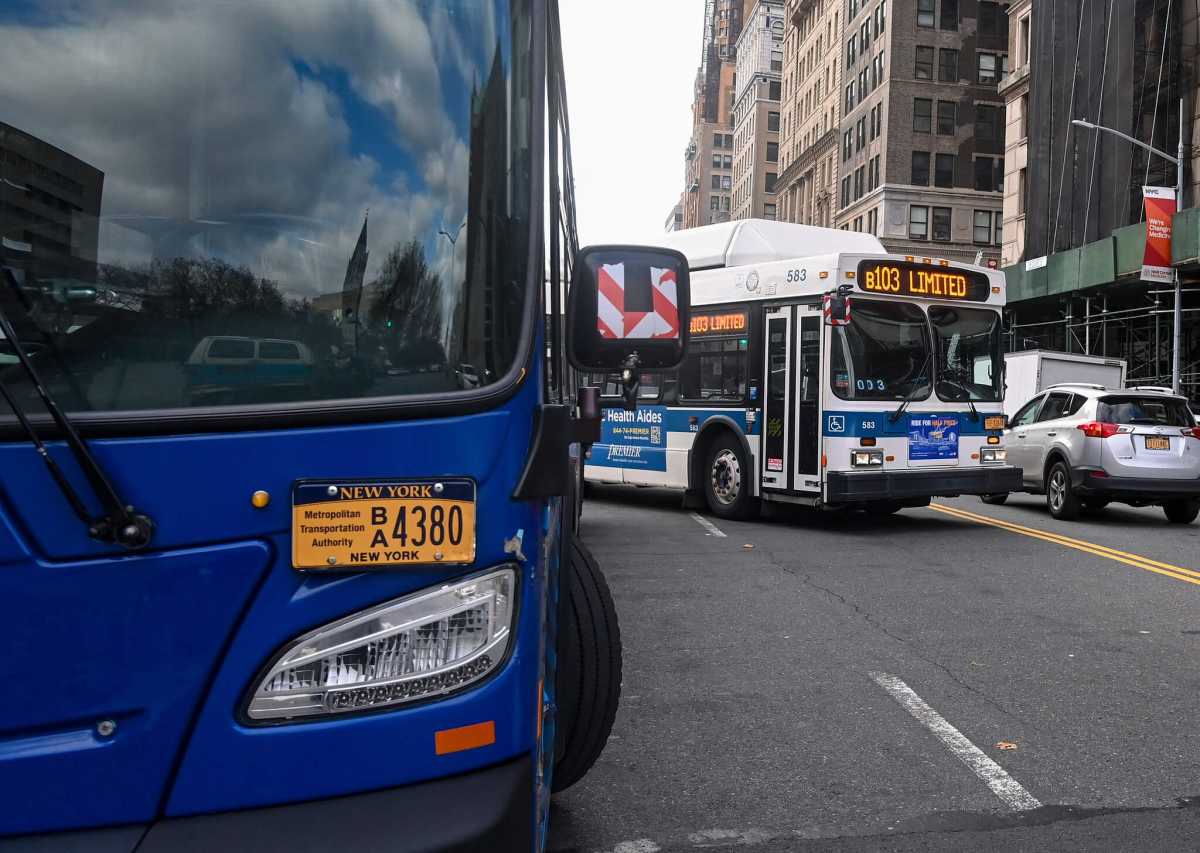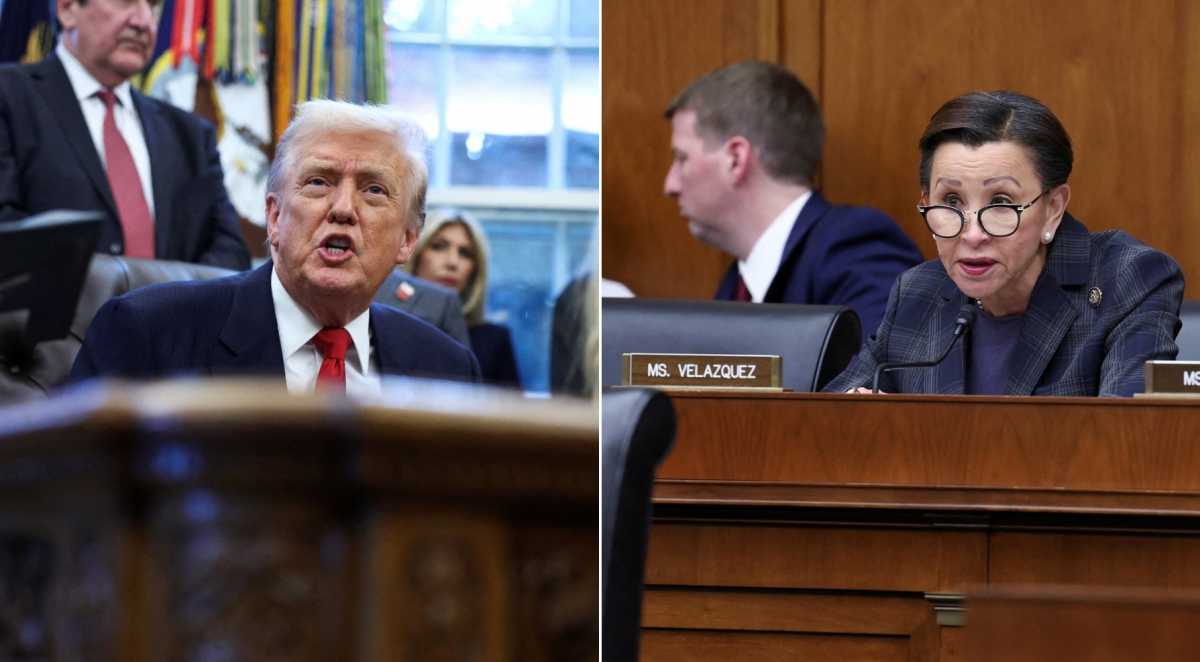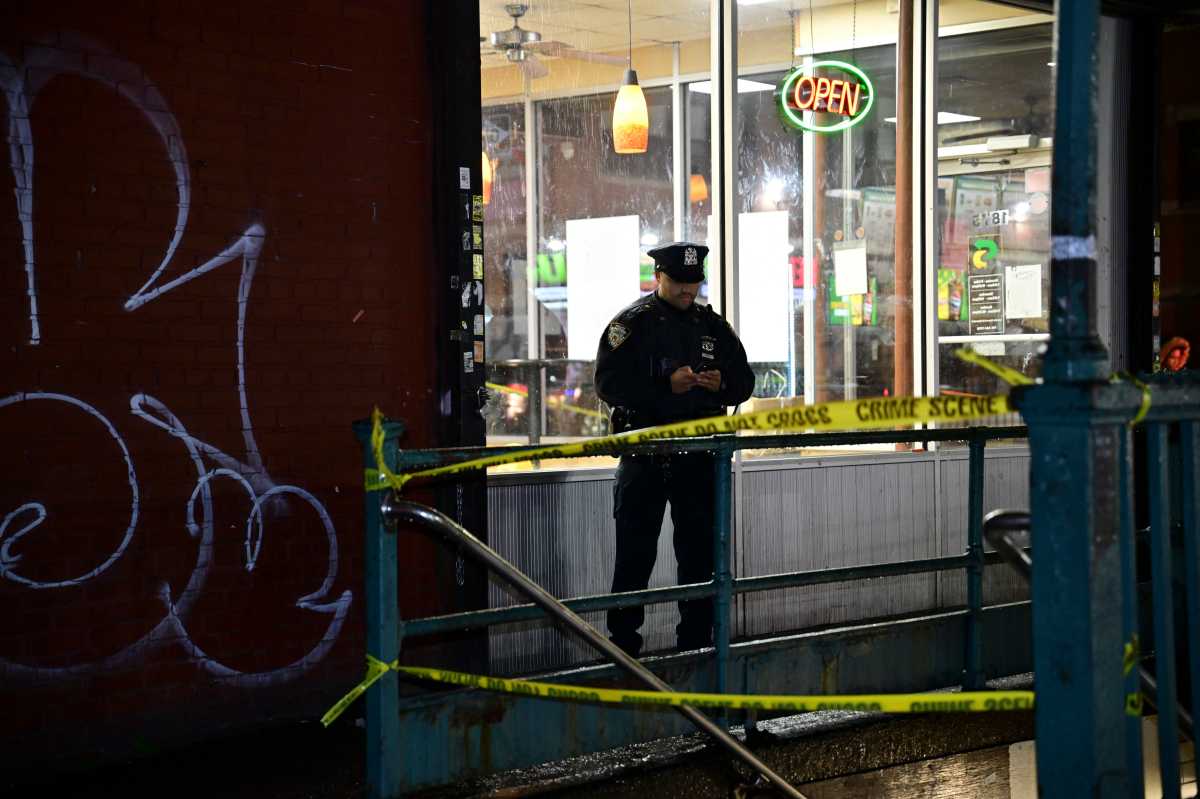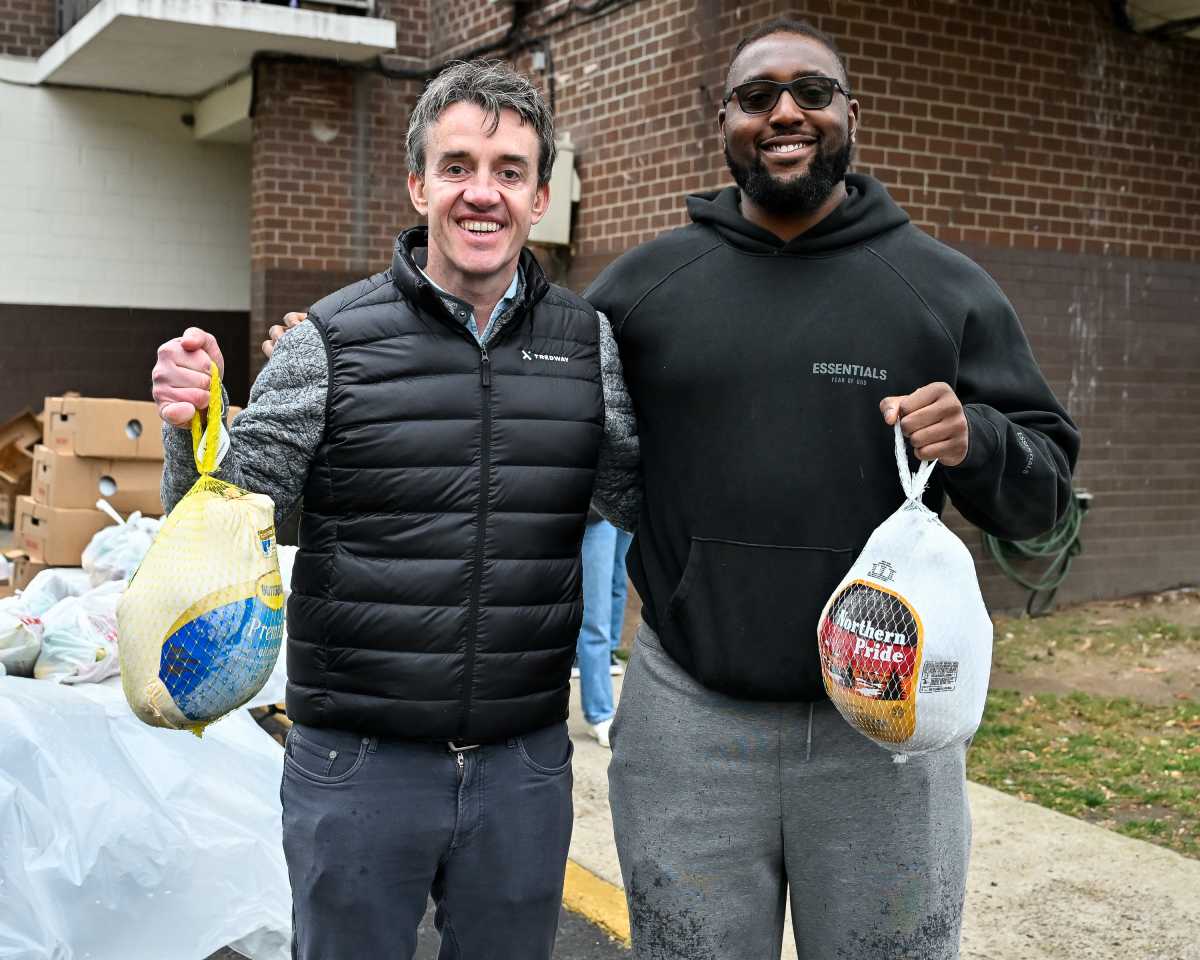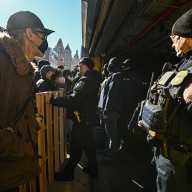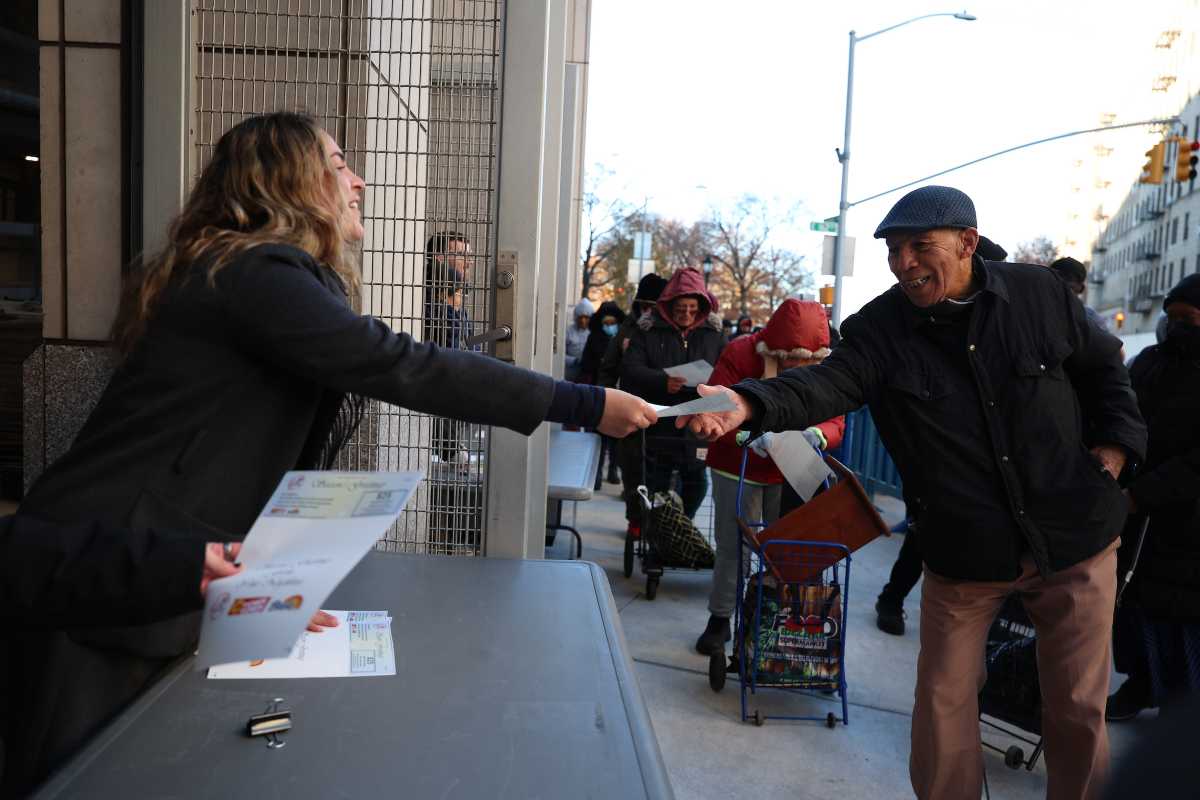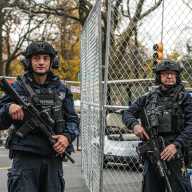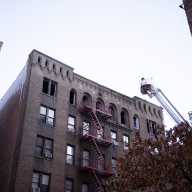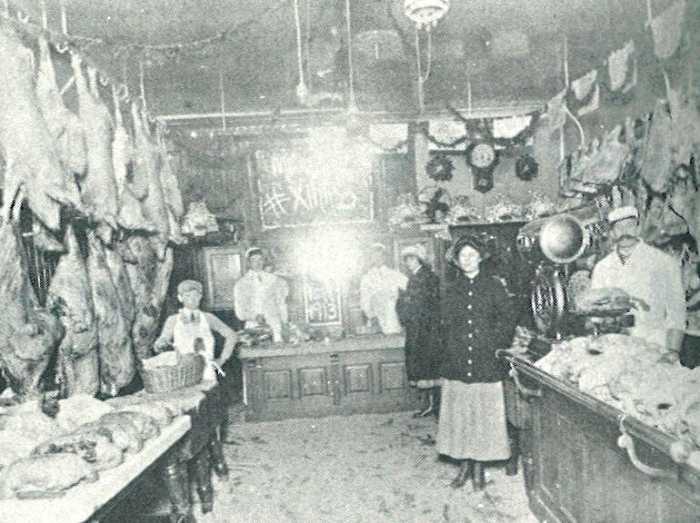The MTA on Thursday unveiled its draft proposal to redesign Brooklyn’s bus network, bringing hope of a better commute for the hundreds of thousands of riders who rely on the borough’s notoriously slow and unreliable buses each day.
The ambitious proposal would see the addition of new lines, major changes on existing routes, simpler and less redundant navigation, and more widely-spaced bus stops in an effort to get Brooklyn straphangers moving more quickly to their destinations.
“The goal is to simplify the network and improve connections, frequency, reliability, and most important, bus speeds,” said MTA Chair Janno Lieber at a press conference outside Brooklyn Borough Hall Thursday. “We’re going to pay special attention to working-class communities and other areas where people are especially dependent on bus service.”
The Brooklyn plan is the fourth redesign put out by the MTA since 2018, when then-Transit president Andy Byford — perhaps better known as Train Daddy — promised to “reimagine” the city’s ancient bus network, where routes were sometimes unchanged since the days of trolley lines and commuters suffer from pitiful speeds, protracted wait times, and poor connectivity to other modes of transit and places of interest.
New York’s buses are among the slowest in the nation, averaging a snail-like 8.2 miles-per-hour across the city in July, according to MTA statistics. Brooklyn sees the second-slowest average speeds of the five boroughs at a paltry 7.3 mph, faster only than the 6.2 mph jitneys of Manhattan.
That means being late to work or other events and constant frustration for the 650,000 people who rode Brooklyn buses on an average pre-pandemic weekday — more than the population of Detroit, and disproportionately non-white, low-income, and living far away from the train.
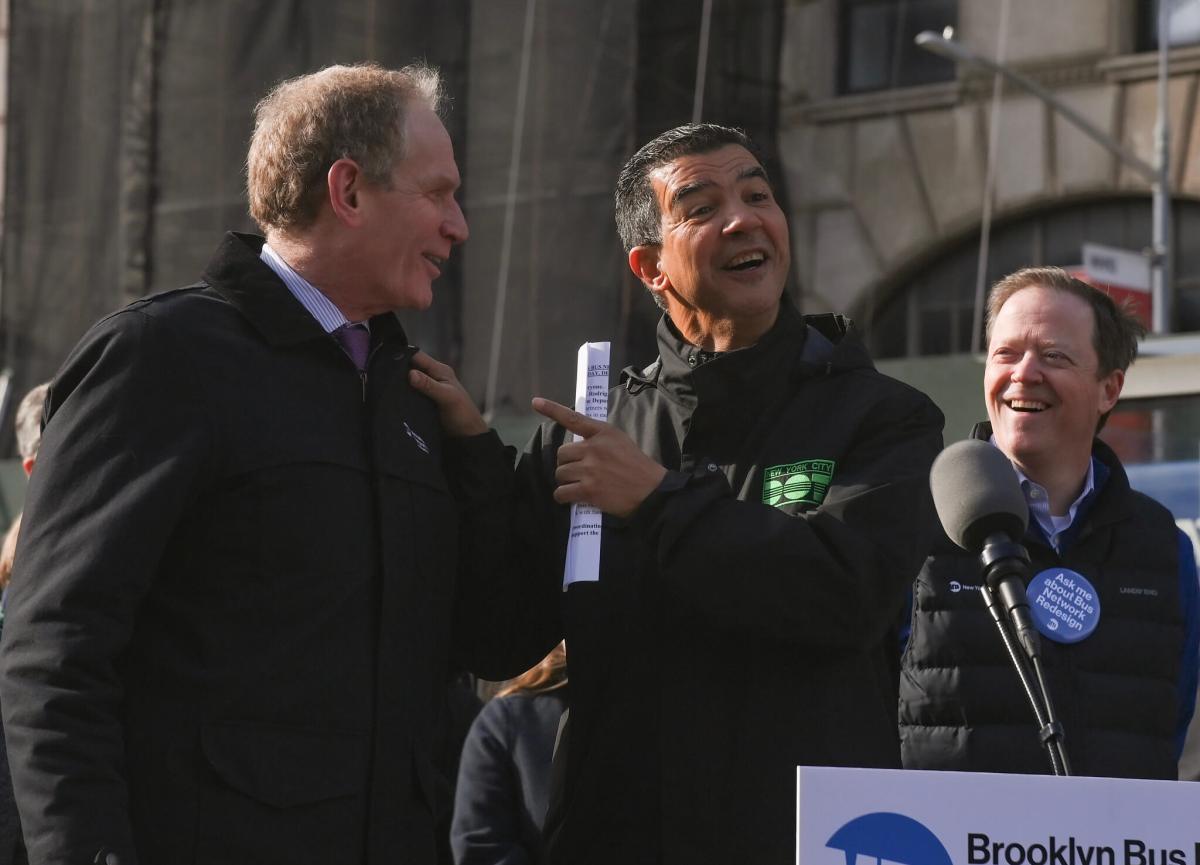
“Our riders need a bus system that is actually, newsflash, it needs to be faster than walking,” said Lieber, “so that they can get where they need to go in a reasonable time.”
In spite of that, the bus network has never before undergone a complete overhaul, and routes that once made logistical sense now often don’t best reflect where people live, work, and play.
There are 69 total routes in the redesigned network, including nine brand-new routes, and there are either major or minor changes to nearly every existing route. Twenty-four routes will see an increase in service frequency, and 5 additional routes will take passengers overnight.
One of the biggest changes can be seen on local routes, where the average distance between stops has increased from 830 feet (some of the closest of any major city) to 1,100 feet. That would allow buses to spend more time in motion and less time stopping, or preparing to stop; officials say each bus stop removed can save up to 20 seconds of travel time, which can add up to a dramatically shortened commute.
Another noticeable change is the addition of a new class of routes, called Rush, to the existing local, limited, and Select Bus Service designations. The aim of Rush routes is to provide local service along corridors in transit deserts and make fewer stops along major corridors, intent on ferrying passengers directly to rail service or major destinations.
For instance, the B41 bus along Flatbush Avenue would be complemented by the B40 Rush route between Prospect Lefferts Gardens and Bergen Beach. The line will stop locally along Avenue N in Bergen Beach and Flatlands before turning onto Flatbush Avenue and only stopping at major junctions; the line will terminate at the Prospect Park bus and transit hub in Prospect Lefferts Gardens.
Rush routes will also replace existing routes on the B20 in East New York and the B26 between Downtown Brooklyn and Bushwick.
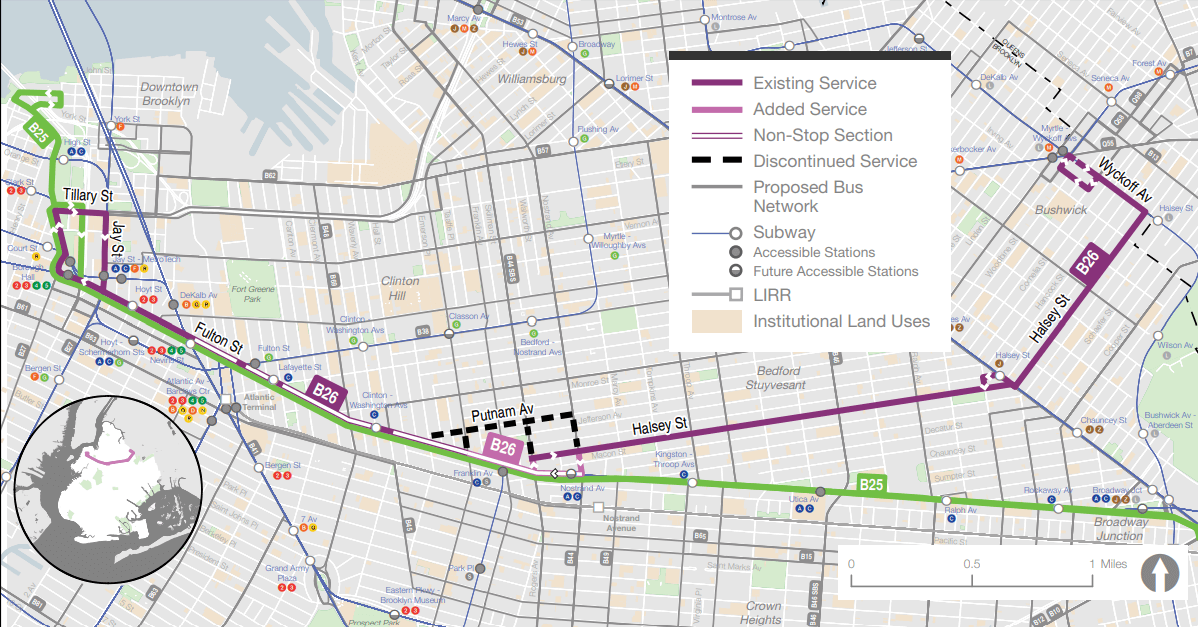
Other new routes aim to provide service to 21st-century New Yorkers who work where the jobs are in 2022.
The new B5 LTD would run swift service between Gravesend and the Gateway Center Mall in East New York, a major job center for Brooklynites. Notoriously transit-starved Red Hook will also be served by two brand-new bus lines, the B27 to Downtown Brooklyn and the B81 to Flatbush Junction.
Many routes will have fewer turns and less time spent on narrow side streets, with the intention of providing a more direct and expeditious commute. Also removed are many redundancies and overlaps between routes to prevent bunching, with multiple routes on the same corridor no longer expected to make the same stops.
The draft also significantly improves interborough connections between Brooklyn and Queens, a longstanding and major complaint among riders identified by the MTA during outreach.
The brand new B55 SBS (officially “crosstown per MTA jargon) will enable a direct, speedy connection between Brooklyn and John F. Kennedy Airport, running from Kensington to the AirTrain in Howard Beach, Queens; presently, only the B15 local bus runs to JFK. The Q68 will now travel between Williamsburg and Astoria, a much larger range than the current Williamsburg to Sunnyside. The B7 will now extend from Midwood all the way up to Ridgewood, Queens.
Much of the plan, and the promise of faster speeds, relies on the construction of bus lanes and other “bus priority” infrastructure, like automated bus lane enforcement, throughout the borough. The city’s Department of Transportation has identified 17 Brooklyn corridors well-suited for bus priority, such as Flatbush and Utica avenues, which host some of the city’s busiest bus routes.
Transit honchos had completed only one network redesign, Staten Island Express buses, and unveiled drafts for the Bronx and Queens before the pandemic put a stopper on the bus overhaul project and caused ridership to plummet; the Brooklyn project was still only in its nascent planning and outreach stages. The five borough project, once projected for completion in 2021, now isn’t expected in full until 2026, though officials don’t want to affix firm timelines so they can fully absorb rider feedback.
The MTA implemented its Bronx redesign this summer, and is set to release its final proposal for Queens next year after a substantial public comment and revision period.
Brooklynites will also have ample opportunity to make their voice heard on the new draft plan, which is anything but final. The agency will hold 18 different public outreach workshops, one in each Community Board, starting with CB1 on Jan. 11 and ending on March 9 in CB18; a full schedule can be found on the MTA’s webpage for the Brooklyn bus redesign.
Riders can also comment directly on Remix, an interactive map of the redesign; comments can even be geotagged to one’s home. Route profiles, and proposed changes, can be studied within the draft plan.
Read more: Bronx Construction Worker Dies, Investigation Ongoing



